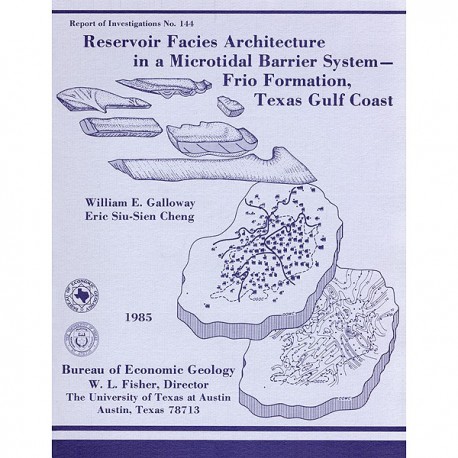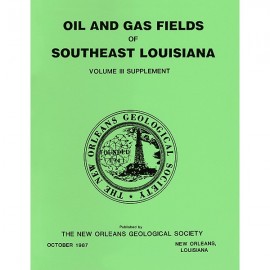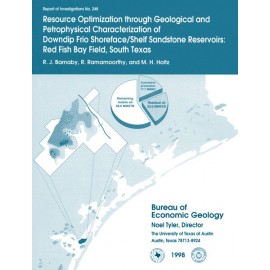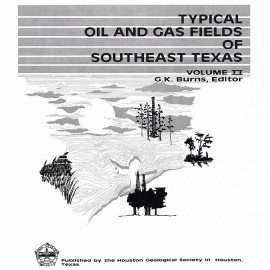Reports of Investigations
-
Books & Reports
- Reports of Investigations
- Guidebooks
- Udden Series
- Geological Circulars
- Down To Earth
- Atlases of Major Oil and Gas Reservoirs
- Texas Memorial Museum Publications
- Environmental Geologic Atlas of the Texas Coastal Zone
- Mineral Resource Circulars
- Other Reports
- Seminars and Workshops
- Handbooks
- Submerged Lands of Texas
- Symposia
- Annual Reports
- Open File Reports
-
Maps & Cross Sections
- Thematic Maps
- Miscellaneous Maps, Charts & Sections
- Geologic Atlas of Texas
- STATEMAP Project Maps
- Geologic Quadrangle Maps
- Cross Sections
- Highway Geology Map
- Energy and Mineral Resource Maps
- Shoreline Change and Other Posters
- Wilcox Group, East Texas, Geological / Hydrological Folios
- Bouguer Gravity Atlas of Texas
- River Basin Regional Studies
- Featured Maps
- Posters
- Teachers & the Public
-
Geological Society Publications
- Gulf Coast Association of Geological Societies
- Alabama Geological Society
- Austin Geological Society
- Corpus Christi Geological Society
- Houston Geological Society
- Lafayette Geological Society
- Mississippi Geological Society
- New Orleans Geological Society
- South Texas Geological Society
- GCS SEPM Publications
- Historic BEG & UT Series
Reservoir Facies Architecture in a Microtidal Barrier System Frio Formation, Texas Gulf Coast
RI0144
Reservoir Facies Architecture in a Microtidal Barrier System--Frio Formation Texas Gulf Coast, by W. E. Galloway and E. S. Cheng. 36 p., 30 figs., 1 table, 2 pls., 1 appendix, 1985. Print Version.
A free, digital version of this publication can be found on: Texas ScholarWorks
RI0144. Reservoir Facies Architecture in a Microtidal Barrier System--Frio Formation Texas Gulf Coast, by W. E. Galloway and E. S. Cheng. 36 p., 30 figs., 1 table, 2 pls., 1 appendix, 1985.
To purchase this publication as a downloadable PDF, please order RI0144D.
ABSTRACT
Sandstone reservoirs deposited in microtidal barrier systems contain large oil and gas reserves in several Gulf Coast Basin plays. Three representative Frio Sandstone reservoirs in West Ranch field show that barrier-island sand bodies are complex mosaics of barrier-core, inlet-fill, flood-tidal-delta, washover-fan, barrier-flat, and shoreface facies. The proportions of these facies differ within progradational, aggradational, and transgressive barrier sand bodies. Detailed isolith and log-facies maps, based on closely spaced production wells, combined with analysis of resistivity distribution and sparse core control, provide the basis for interpretation of the 41-A, Glasscock, and Greta reservoirs.
The 41-A reservoir is a progradational barrier sand body. The most important producing facies include the barrier core and crosscutting inlet fill. Permeability and distribution of irreducible water saturation reveal depositional patterns and subdivisions of the sand body into numerous facies-controlled compartments. Both original hydrocarbon saturation and irregularities in water encroachment show that the facies compartments locally affect fluid movement within the reservoir.
The Greta reservoir is an aggradational barrier complex. This massive sand body consists of intermixed barrier-core and inlet-fill units. Prominent resistivity compartments are dip oriented, indicating the importance of inlet development during barrier aggradation. Despite the uniform appearance of the Greta reservoir, water encroachment has been irregular.
The Glasscock reservoir is characterized by comparatively low permeability and is an atypically thin and discontinuous Frio reservoir. It is interpreted to be a transgressive barrier deposit, and it consists mainly of large washover-fan and associated barrier-flat sands. Hydrocarbon saturation, drainage, and injection response all reflect the facies geometry typical of a transgressive barrier complex.
Recovery efficiency of Frio barrier-island reservoirs is high. However, projected primary and secondary recovery from the three reservoirs studied range from 56 percent of oil in place in the 41-A reservoir to 39 percent in the Glasscock sandstone. The Greta sandstone is intermediate, having a projected recovery of 42 percent of oil in place.
Keywords: barrier bar, barrier inlet, enhanced recovery, Frio Formation, petroleum, natural gas, reservoirs
CONTENTS
ABSTRACT
INTRODUCTION
Barrier-island depositional systems
Stratigraphic record of barrier deposition
Recognition of subsurface barrier facies
OIL-PRODUCTIVE SHORE-ZONE SYSTEMS OF THE GULF BASIN
West Ranch field
41-A reservoir--a progradational barrier sandstone
Component barrier-island facies
Barrier-core facies
Inlet-fill facies
Lateral facies relationships
Overview of reservoir facies heterogeneity
Permeability distribution
Resistivity patterns and hydrocarbon distribution
Drainage history
Greta reservoir-an aggradational barrier sandstone
Reservoir characteristics and origin
Production history
Glasscock reservoir-a transgressive barrier sandstone
Reservoir characteristics and origin
Hydrocarbon distribution and production history
DISCUSSION AND CONCLUSIONS
ACKNOWLEDGMENTS
REFERENCES
APPENDIX
Figures
1. Microtidal, wave-dominated shore-zone depositional systems 2
2. Depositional environments of a microtidal barrier island, Matagorda Island, Texas coast
3. Architectural elements of a barrier-island sand body
4. Stratigraphy of progradational, aggradational, and transgressive barrier-island sand bodies
5. Sand-body geometry and representative SP logs of modern barrier islands of the Texas coast
6. Depositional systems of the Frio Formation and paleogeographic setting of West Ranch field
7. Structure-contour map of West Ranch field showing the simple domal anticline that creates the trap
8. Dip-oriented regional cross section through West Ranch field
9. Structure-contour map of West Ranch field showing the combined domal structure and superimposed depositional topography of the 41-A reservoir
10. Net-sand isolith map of the 41-A main and the genetically associated stringer reservoir
11. Map of SP log patterns of the 41-A sand
12. Interpreted depositional elements of the 41-A sand
13. Log response, texture, internal features, and petrophysical properties of the barrier-core facies of the 41-A reservoir, well A-493
14. Log response, texture, internal features, and petrophysical properties of the inlet-fill facies, 41-A reservoir, well A-496
15. Map of average 41-A reservoir permeability.
16. Cross plot of measured core-plug permeability (k) and log-derived deep resistivity (R,) within the hydrocarbon-saturated zone of the 41-A reservoir
17. Deep-resistivity log patterns of the hydrocarbon-saturated portion of the 41-A reservoir
18. Geometries of resistivity (saturation) compartments
19. Water-cut distribution in test wells during latter stages of depletion of the 41-A main reservoir
20. Typical log response and textural properties of the Greta reservoir, well A-493
21. Map of deep-resistivity log patterns in hydrocarbon saturated portions of the Greta reservoir
22. Distribution of maximum measured deep resistivity within hydrocarbon-saturated portions of the Greta reservoir
23. Map of water-cut for wells producing in the Greta reservoir, June 1977
24. Log response, internal features, and petrophysical properties typical of the Glasscock reservoir
25. Net-sand isolith map of the Glasscock reservoir.
26. Interpreted depositional elements of the Glasscock sand in the main field area
27. Geometry of water-flood front following 9 years of water injection along the gas-oil contact
28. Reservoir model of the barrier-core and inlet-fill facies complex
29. Reservoir model of tidal-channel fill and associated tidal-delta and back-barrier facies mosaic
30. Reservoir model of washover-fan and associated back-barrier facies
Table
1. Characteristics of the Greta, Glasscock, and 41-A reservoirs, West Ranch field
PLATES (in pocket of book)
1. Cross sections through 41-A reservoir, West Ranch field area
2. Resistivity (saturation) compartments and reservoir architecture
Citation
Galloway, W. E., and Cheng, E. S., 1985, Reservoir Facies Architecture in a Microtidal Barrier System--Frio Formation Texas Gulf Coast: The University of Texas at Austin, Bureau of Economic Geology, Report of Investigations No. 144, 36 p.






